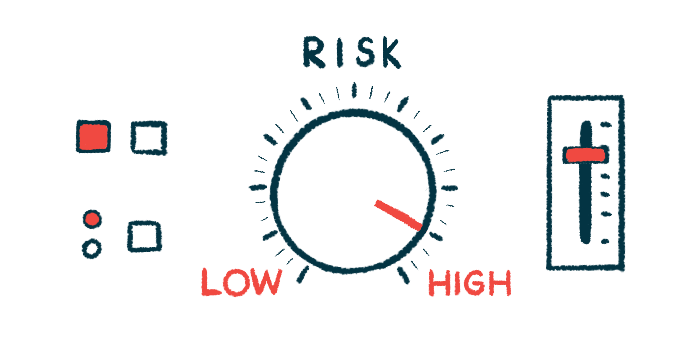Lupkinis plus MMF most effective in lupus nephritis; tacrolimus safest
Researchers reviewed 17 randomized controlled trials of 2,890 people
Written by |

A combination of Lupkinis (viclosporin) with mycophenolate mofetil (MMF) was the most effective at managing lupus nephritis, according to a systematic review of clinical trial data.
The treatment was also associated with the highest risk of infections and serious infections, indicating a lower safety profile than other immunosuppressive therapies, such as tacrolimus, which showed a high efficacy, but had the lowest risk of infections compared with other immunosuppressants, making it a more favorable treatment option regarding safety.
“We can only provide a low level of confidence in the efficacy evaluation of tacrolimus. Therefore our results should be interpreted with caution,” the researchers wrote in “The efficacy of immunosuppressive drugs induction therapy for lupus nephritis: a systematic review and network meta-analysis,” which was published in Renal Failure.
Lupus is an autoimmune disease that occurs when a person’s immune system attacks healthy tissues. Disease symptoms depend largely on the parts of the body affected, which include the kidneys in around 60% of patients. Lupus nephritis, a severe complication of lupus, is marked by kidney inflammation and damage. If not appropriately treated, it may compromise the kidneys’ ability to remove waste and lead to kidney failure.
Treating lupus nephritis usually includes immunosuppressive medications and glucocorticoids, which improve kidney function and reduce mortality. These treatments can also suppress the normal functioning of the immune system, however, increasing the risk of infections.
“Despite the availability of therapeutic drugs … the incidence of [kidney] remission in [lupus nephritis] remains low,” wrote researchers in China who conducted a systematic literature review and meta-analysis to investigate the safety and effectiveness of immunosuppressant therapies commonly used for lupus nephritis.
Comparing lupus nephritis treatments
The review included 17 randomized controlled trials that enrolled 2,890 people with lupus nephritis receiving induction therapy with immunosuppressants. Treatment typically involves the induction phase, which is meant to rapidly eliminate inflammation and symptoms, and the maintenance phase to maintain remission achieved in the induction phase.
Most studies compared the effectiveness of MMF versus intravenous (into the vein, IV) cyclophosphamide or IV cyclophosphamide versus tacrolimus. Two studies compared Lupkinis, given in combination with MMF, with MMF alone. The treatment’s efficacy was assessed by analyzing a complete or partial kidney response.
Patients receiving IV cyclophosphamide were 75% less likely to achieve a complete response than those treated with tacrolimus, and 92% less likely than those treated with Benlysta (belimumab) plus MMF. Benlysta is an antibody designed to reduce the production of disease-causing autoantibodies.
Treatment with Lupkinis plus MMF led to a complete response rate 6.5 times higher than MMF alone and 11.5 times higher than Benlysta plus MMF. It also led to a complete response rate much higher than IV cyclophosphamide alone or low-dose leflunomide.
There were no significant differences between the treatments regarding the partial remission of kidney disease.
Safety concerns
However, the risk of infections was 9.9 times higher with MMF and 6.4 times higher with IV cyclophosphamide compared to tacrolimus.
The overall ranking of each treatment’s safety and efficacy was calculated using the surface under the cumulative ranking curve (SUCRA), a method used to establish a hierarchy of treatments that considers all treatment-related effects. A higher SUCRA value corresponds to a higher rank.
The combination of Lupkinis with MMF ranked the highest (92%) with effectiveness in achieving complete kidney response, followed by Benlysta with MMF (83%) and high-dose IV cyclophosphamide (82.3%).
Regarding a partial response, Lupkinis with MMF also ranked the highest (79.6%), followed by low-dose leflunomide (70.1%) and low-dose MMF (65.1%).
However, Lupkinis plus MMF was also associated with the highest risk of infections (76%), while tacrolimus had the lowest risk (11.5%). The same was observed regarding the risk of severe infections (72.9% vs. 3.4%).
“[Lupkinis] in combination with MMF demonstrated the highest efficacy as an induction therapy for [lupus nephritis], “ the researchers wrote. “However, it should be noted that the risk of infection and serious infection was found to be high with this regimen.”
Treatment with tacrolimus was associated with a high efficacy (60.5% for complete response, 29.6% for partial response) and a lower risk of infection, “making it a favorable option in terms of safety,” the researchers said.
The low number of studies included and the variation in the characteristics, as well the fact that other efficacy parameters or side effects weren’t included, were noted among the study’s limitations.






